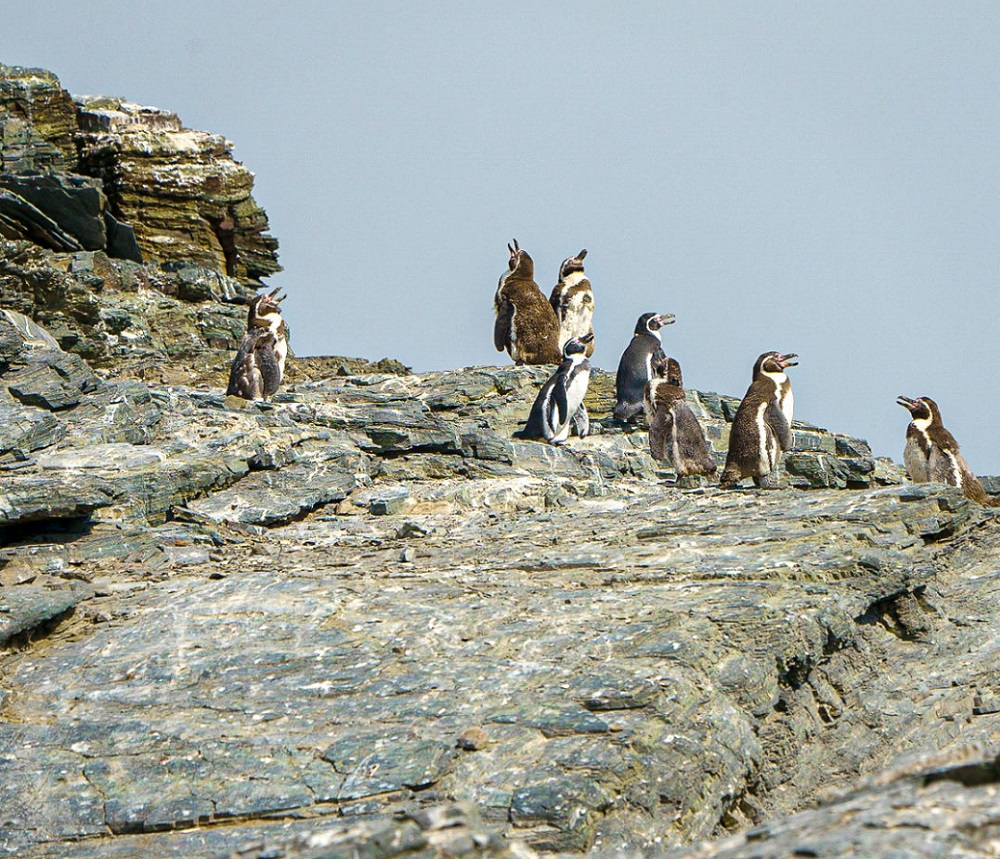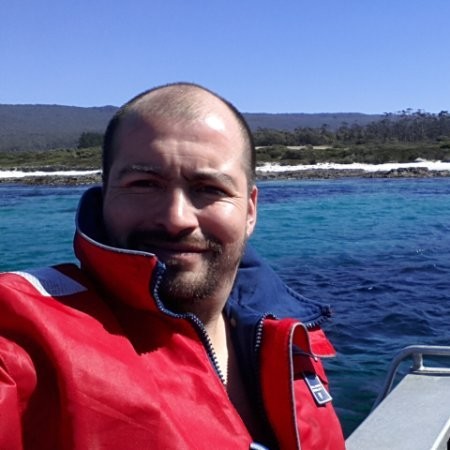Humans have a deep love and longing for the ocean. For centuries, we have written poems, composed songs, created paintings, and made sculptures to express this deep love and devotion. At first, this love was mixed with fear because of the depths and mysterious creatures that live under the sea that were, many times, threatening to human beings. But now, centuries later and in the context of the climate crisis, this deep love is also mixed with the fear of losing and damaging what you once loved the most.
These mixed feelings are rooted in the knowledge that oceans give life to humans and a lot of ecosystems on the planet. It is well known that oceans are not only a viable source of food, but they are also intimately linked to the health of our planet. Just to mention an example: 70% of the oxygen we breathe comes from the oceans. Also, oceans regulate the temperature of the planet. This happens because during the day, the sea absorbs sunlight and retains energy, maintaining a cool climate, and gradually releases it at night to maintain temperature balance.
If we consider that 71% of the planet’s surface is covered by oceans, it is easy to understand how the health of the oceans has a global impact.
A country between mountains and the sea
A healthy ocean is especially relevant in Chile, a Latin American country that has a 6,435 km long coastline that bathes in the Pacific Ocean, the largest and deepest of earth’s five oceanic divisions.
With a very long coastline, Chile has a variety of different beaches and ecosystems. You can find clear water and white sand in the north of the country or you can find and enjoy big waves, windy skies, and black sand in the south of the country. This is due to the Humboldt Current, a cold, low-salinity ocean current that flows along the western coast of South America. Humboldt sea surface temperatures are around 16 °C, a very uncommon temperature for waters from other regions. Usually their temperature is above 25 °C.
The cold water feature brings a very different seascape. It provides nutrients to the surface, favoring the reproduction of phytoplankton, which results in more vertebrate and invertebrate marine species living in the Pacific Ocean.
The Humboldt Current, the key to Pacific Ocean biodiversity
Right in the middle of Chile, 140 kilometers north of Santiago, there is a small coastal town called Los Molles. If you arrive on a sunny day during summer you will find happy people enjoying the small waves, the fresh air, boats, small food shops and diving schools.
Due to the Humboldt Current, Los Molles is well known as a place of biodiversity where divers, fishermen and locals can find unique species of fish, marine mammals and other cetaceans. On a good day, you can spot dolphins or seals swimming near the beach. Also, the deep waters of Los Molles is the only place you can find the small shark called pintarroja or a special fish called borachilla.
“Chile´s ecosystems mimic the ones from an island because we live between the Atacama Desert, the Andes Mountains, the Antarctic, and the Humboldt Current. All these geographical facts together provide the conditions for the existence of so many endemic species and marine biodiversity hotspots. Somes species only live here”, explains Adela Opazo, a young university student who is doing her internship in the Nomade diving school of Los Molles.
“And in order to preserve this unique and delicate ecosystem we have to protect the environment from threats like overfishing, mining, salmon farming and plastic and noise pollution”, she adds.
Opazo’s bachelor’s degree is in marine biology and she has always been an ocean lover: “Humans always were looking at the moon but never wanted to dive in the sea”, she states about her passion for the sea.
Diving in Los Molles
When you swim in the Pacific Ocean you can feel the cold water aching your bones. If you happen to dive in Los Molles, you can still feel the ache in your body when you enter the water, however the eagerness to discover what creatures you can find under the sea is bigger.
The water is cold, but the vision is clear. The deep blue of the ocean feels like a web that nestles you. Under the water you cannot speak, and you can only hear your own breath. As you go deeper and go with the flow you can discover rocks, kelp forests, sea stars and little fish that shine bright like a diamond.
Steven is from Colombia and has lived in Chile since 2019. He settled in Los Molles and currently works as an instructor at the Nomade diving school.
“What we saw on our dive is very minimal. A few meters further you can see bigger fish, walls like the top of a mountain where you can find sea sponges, sea lions and giant jellyfish. It’s a very beautiful marine geography,” he says.
“What I like most about diving in the sea is that you can feel: silence, bubbles, meditation, depth. I have not been to other diving spots in Chile, but the marine geography of Los Molles is very beautiful,” he explains.
Threats to the Pacific Ocean
Ivan Hinojosa, a researcher and academic at the Catholic University of the Most Holy Conception, is investigating the different types of pollution that affect the Chilean sea, one of which is noise. “Formerly it was thought that the sea was a place of silence. Through research we have been learning that under the seawater there are a lot of vocalizations from marine mammals, fish and invertebrates”, he explains.
The researcher explains that noises can interfere with the normal development of underwater ecological processes. “We are generating some research on anthropogenic noise in the sea with master’s and doctoral students. With other colleagues we are investigating how boat noise could also be interfering with communication in whales and larger mammals.”
Hinojosa is also investigating how warm water coming from the North Pole – due to the climate crisis – is changing the distribution patterns of species and the places they inhabit. “This is a story that could be very relevant to knowing how to mitigate the effects of climate change,” he says.
“Many species are going to have to change their distribution ranges and the places they inhabit. We are doing some studies and comparing species distribution patterns. Our first findings state that some species that live further south are living a little further north”.
Public policies to protect the ocean
During his first year in the office, the newly elected Chilean president Gabriel Boric and his government have worked to create protected marine areas where human beings cannot do any activity. In early 2023, he announced the creation of the marine protected area called Mar de Pisagua in the north of the country, an area of 73,460 hectares that seeks to preserve this marine ecosystem.
Located from Sierra Gorda to Mejillones Norte, the Mar de Pisagua area is home to species of great importance for conservation such as the Humboldt penguin, the green turtle, the southern seal, the “chungungo” and kelp forests.
21% of the Chilean surface is protected territory, and 43% of marine areas are Exclusive Economic Zones, with specific regulations to protect the biodiversity of those coasts.
“It has been shown in other parts of the world that marine park areas work very well for conservation of the species”, explains Hinojosa.
“In Chile we have these parks, but two things are missing; The first is their administration: Who is going to oversee these parks? What can or cannot be done in these parks?”, he states.
The researcher explains that along with these protected areas comes the challenge of integrating the continental coast. “A lot of the marine conservation areas are in remote places like Easter Island or the Juan Fernández Islands. There is little human activity there. What I am saying is that there is more activity than on the Chilean coast where we also have unique species and ecosystems”, he adds.
Protecting the sea: to care about life itself
According to Hinojosa, the Humboldt current allows the area to produce 40% of the marine protein consumed in the world. “It does not only feed humans but this protein, which comes from fish and cuttlefish, is used in the pellets that are going to feed dogs, cats, cows and pigs all over the world”.
“If we do not take care and worry about maintaining this area in a sustainable way, we are putting our own survival at risk,” concludes Hinojosa.
Ricardo Bosshard, the director of World Wildlife Fund (WWF) Chile, affirmed a year ago, on the celebration of the “world ocean day” in Valparaíso, Chile, that “it is necessary to protect the oceans and work to strengthen them in different areas, one of which is to survey and promote the creation of marine protected areas, which can have a great impact not only for the environment, but also for the communities in which they develop, giving their inhabitants the opportunity to maintain their cultural heritage and biodiversity. To achieve this, it is necessary to have greater representation, effective management, and instances such as the environmental fund and pilot for seabed“.
This need was partly addressed at the beginning of March of 2023, when the UN delegates reached an historic agreement on protecting marine biodiversity in international waters. The UN member countries signed a document to ensure the conservation and sustainable use of marine biological diversity in areas beyond national jurisdiction, calling it a “breakthrough” after nearly two decades of talking.
But for people who live near the sea, it is about protecting what they love and life itself: “The sea remains a mystery and protecting it is one of the ways we can protect our survival in this climate crisis. We can generate effective mitigation by taking care of the sea. Although we cannot live in the sea, we are very dependent on it. For me, protecting the sea is about protecting what nurtures me and makes me happy. Whenever I dive, I am amazed and happy even though I had the most difficult day”, concludes Adela Opazo.
Marta Apablaza Riquelme is a freelance science journalist based in Santiago, Chile










